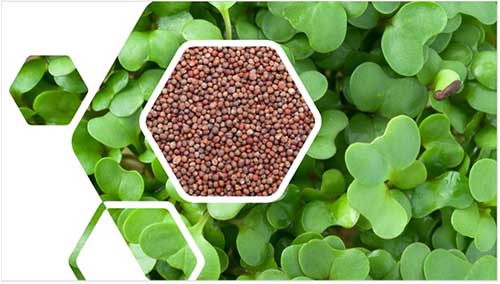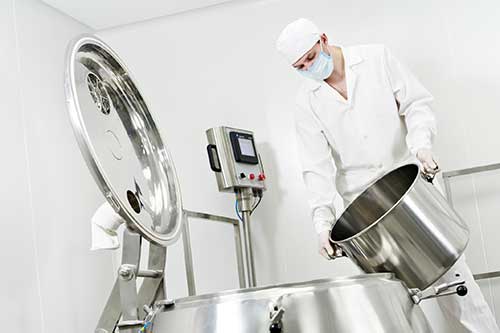The Sulforaphane-Nutrigenomics Connection
Although the term, Nutrigenomics was not coined until 2004, the unfolding science of sulforaphane perfectly illustrates the principles of nutrigenomics in favourably influencing the expression of many of our protective genes. Sulforaphane activates around 200 of the genes governing human cellular defence mechanisms. To maintain their normal function, human cells must continuously defend themselves against the many daily assaults that threaten to promote disease.
It is because sulforaphane activates these genes through a cellular ‘switch’ known as Nrf2 that it can exhibit beneficial effects on so many seemingly-unrelated conditions.
What’s more, unlike the polyphenolic molecules such as those from green tea, grapes (including resveratrol), berries, turmeric (curcumin) and others with low bioavailability, sulforaphane is highly-bioavailable, enabling it to readily enter the cells in significant amounts.
A growing Body of Research
Research on sulforaphane is growing rapidly, with more than 2000 peer-reviewed publications on this topic currently available on PubMed. With an increasing number of clinical trials being listed with the U.S. database alone, there is growing interest in this versatile bioactive phytochemical.
As the demand for this material has grown, so too has the number of broccoli sprout products in the market. So unregulated is the entry of such products into the market that it is difficult if not impossible for a consumer, or even a clinician, to determine the worth of such products. The science which underpins sulforaphane’s benefits in humans is generally more complex than for many of the nutraceutical supplements which have gone before it.
Consequently, unwary consumers can be buying products which have little if any beneficial effect on health because the manufacturer does not understand the chemistry and is not skilled in manufacturing a finished product which retains the sulforaphane activity needed for enhancing the function in human cells.
Choosing Wisely
A glance at the labels and Product Specification sheets which accompany many of these products reveals that the manufacturers and marketers have little knowledge of the subtleties of sulforaphane. Some products naively claim to contain sulforaphane; this is not possible as sulforaphane itself is unstable. The product should instead contain the two precursors, glucoraphanin and myrosinase which react when the product is consumed. Be very suspicious of any product claiming to contain sulforaphane, unless it provides evidence that it has been pharmaceutically stabilised.
 Be equally wary of products described as ‘extracts’ of either broccoli seed or sprouts. ‘Extracts’ must be produced in a way that completely destroys the activity of the myrosinase enzyme. As such, they are incapable of producing sulforaphane when consumed in a supplement or food. Many are labelled with a term contrived for marketing purposes, ‘sulforaphane glucosinolate’, presumably to imply that the product releases or contains sulforaphane. This is a misleading name for the correct chemical name ‘glucoraphanin’. Most importantly, ‘sulforaphane glucosinolate’ is not a scientific term and there is no need to create an ambiguous term to describe ‘glucoraphanin’. The majority of the available products (including those for clinicians) are of this type.
Be equally wary of products described as ‘extracts’ of either broccoli seed or sprouts. ‘Extracts’ must be produced in a way that completely destroys the activity of the myrosinase enzyme. As such, they are incapable of producing sulforaphane when consumed in a supplement or food. Many are labelled with a term contrived for marketing purposes, ‘sulforaphane glucosinolate’, presumably to imply that the product releases or contains sulforaphane. This is a misleading name for the correct chemical name ‘glucoraphanin’. Most importantly, ‘sulforaphane glucosinolate’ is not a scientific term and there is no need to create an ambiguous term to describe ‘glucoraphanin’. The majority of the available products (including those for clinicians) are of this type.
Pitfalls for the Unwary
For a product to be capable of producing sulforaphane when consumed, it must contain both glucoraphanin and the myrosinase enzyme. Because an extract has no myrosinase activity, the inert glucoraphanin it contains is unable to produce sulforaphane. However, when a consumer reads a label which states, for example, “30mg sulforaphane glucosinolate”, he or she is likely to assume that the product contains 30mg of sulforaphane.
Two well-designed studies (found here and here) highlight the fact that such products have no inherent sulforaphane-releasing capacity and that consumers can be misled into believing that such products are delivering benefits that are not possible with such products. Most consumers of course, have no way of determining the accuracy or reliability of such information and so, not surprisingly the products with the clever marketing campaigns sell well, in spite of the quality (or otherwise) of the ingredient. In addition, these same clinical trials highlight the benefits of using a whole broccoli sprout powder in order to take advantage of its other bioactives compounds.
Manufacturing a Quality Sulforaphane-Yielding Supplement
To produce a high-quality broccoli sprout ingredient, a manufacturer must have a solid understanding of the rather complex chemistry associated with this plant. This understanding encompasses many of the combined skills of an analytical chemist, a biochemist, a plant physiologist and a production engineer.
 Unlike other ‘green’ powders, broccoli sprouts cannot simply be grown and dried. This is because the finished product must retain optimal levels of the precursor compound, glucoraphanin as well as the essential enzyme, myrosinase. In addition, broccoli seed and the young sprouts contain other undesirable compounds which must be carefully removed without simultaneously destroying the essential bioactives. A competent manufacturer takes all these factors into account, monitoring the product at every step of the process to ensure that the final product has been optimised for its Sulforaphane Yield.
Unlike other ‘green’ powders, broccoli sprouts cannot simply be grown and dried. This is because the finished product must retain optimal levels of the precursor compound, glucoraphanin as well as the essential enzyme, myrosinase. In addition, broccoli seed and the young sprouts contain other undesirable compounds which must be carefully removed without simultaneously destroying the essential bioactives. A competent manufacturer takes all these factors into account, monitoring the product at every step of the process to ensure that the final product has been optimised for its Sulforaphane Yield.
EnduraCell 100% whole optimised Broccoli Sprout Powder
Cell-Logic’s proprietary technology optimises every step of the production process to produce a 100% whole broccoli sprout powder which maximally retains both glucoraphanin and myrosinase whilst, at the same time, deactivating the inhibitors. Glucoraphanin makes up only 75% of the bioactive precursors in the broccoli sprout plant, so EnduraCell as a whole food powder also retains the remaining bioactives.
The result? A high sulforaphane-yielding 100% whole broccoli sprout powder with nothing added and nothing removed. It is our thorough knowledge of the plant physiology together with the technical know-how required to carefully process these delicate miniature plants that enables Cell-Logic to produce its flagship EnduraCell® ingredient.


 Be equally wary of products described as ‘extracts’ of either broccoli seed or sprouts. ‘Extracts’ must be produced in a way that completely destroys the activity of the myrosinase enzyme. As such, they are incapable of producing sulforaphane when consumed in a supplement or food. Many are labelled with a term contrived for marketing purposes, ‘sulforaphane glucosinolate’, presumably to imply that the product releases or contains sulforaphane. This is a misleading name for the correct chemical name ‘glucoraphanin’. Most importantly, ‘sulforaphane glucosinolate’ is not a scientific term and there is no need to create an ambiguous term to describe ‘glucoraphanin’. The majority of the available products (including those for clinicians) are of this type.
Be equally wary of products described as ‘extracts’ of either broccoli seed or sprouts. ‘Extracts’ must be produced in a way that completely destroys the activity of the myrosinase enzyme. As such, they are incapable of producing sulforaphane when consumed in a supplement or food. Many are labelled with a term contrived for marketing purposes, ‘sulforaphane glucosinolate’, presumably to imply that the product releases or contains sulforaphane. This is a misleading name for the correct chemical name ‘glucoraphanin’. Most importantly, ‘sulforaphane glucosinolate’ is not a scientific term and there is no need to create an ambiguous term to describe ‘glucoraphanin’. The majority of the available products (including those for clinicians) are of this type. Unlike other ‘green’ powders, broccoli sprouts cannot simply be grown and dried. This is because the finished product must retain optimal levels of the precursor compound, glucoraphanin as well as the essential enzyme, myrosinase. In addition, broccoli seed and the young sprouts contain other undesirable compounds which must be carefully removed without simultaneously destroying the essential bioactives. A competent manufacturer takes all these factors into account, monitoring the product at every step of the process to ensure that the final product has been optimised for its Sulforaphane Yield.
Unlike other ‘green’ powders, broccoli sprouts cannot simply be grown and dried. This is because the finished product must retain optimal levels of the precursor compound, glucoraphanin as well as the essential enzyme, myrosinase. In addition, broccoli seed and the young sprouts contain other undesirable compounds which must be carefully removed without simultaneously destroying the essential bioactives. A competent manufacturer takes all these factors into account, monitoring the product at every step of the process to ensure that the final product has been optimised for its Sulforaphane Yield.